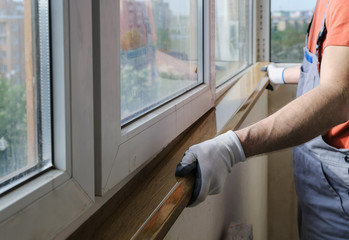Four Reasons to Make Fence Repairs regularly
Inspecting and making minor repairs to your fence regularly can prevent small issues from escalating into larger problems that require replacement. This can save you time, money, and frustration if you want to know more about fence repair visit Fence Contractor Summerville.
Repairs to a fence include replacing boards, hammering loose nails, or tightening screws. In addition, fences can be painted or stained to increase their lifespan.

Wood fence posts need to be inspected and treated regularly for rot or insect infestation. If the damage is severe, replacing the post may be necessary. Depending on the type of wood used and whether it was pressure-treated with CCA (chromated copper arsenic), timber posts can last 30 or more years before they need replacement.
Concrete fence posts are more durable than wooden ones and are less susceptible to insect infestations, but they have a higher upfront cost. They can also be more expensive to transport and install than timber posts.
If a concrete fence post is heaving or tilting, it’s likely due to a failure of the concrete footer. Shoring the fence on both sides of the problem may be enough to prevent it from shifting, but a more permanent solution is to dig out the post and replace the concrete footer.
Wooden fence posts are susceptible to insect infestations, rot, and weather damage. They can be stained and sealed to provide some protection, but this isn’t foolproof. If you want to prolong the life of your wood fence posts, consider installing galvanized steel poles instead.
If a concrete fence post has begun to crack or chip, a quick repair product called an EZ mender might save it. Before attempting this repair, ensure the concrete is not too soft by digging around the base and using a cold chisel or sledgehammer to break up any remaining fragments. Once you have the EZ mender in place, use 3 1/2″ exterior wood screws to secure it to the post.
A pointy stake that’s driven into the ground to support a fence, secure a tent, tether animals, or mark points in surveying. A fence picket can also prevent workers and customers from entering a plant during a strike or protest.
A wood picket can warp over time, especially if it’s in a direct sunlight spot. This can cause gaps and cracks. Fortunately, this can be fixed by filling in the damage with wood putty and staining the entire board. It’s a good idea to do this work on a dry day so the stain can fully cure over 12-24 hours.
If a section of your fence is completely rotten, it may need to be replaced. First, remove the affected boards and separate them from the unaffected sections. Next, replace the rotted sections with new boards, line them up properly, and nail them to the railing with a hammer or nail gun.
Wood, metal, vinyl, and composite fences have unique challenges regarding repairs and maintenance. While it’s possible to fix a wooden picket fence yourself, it’s best to have professional help with any repairs or replacements that involve wrought iron, aluminum, or vinyl.
For instance, repairing a metal fence involves using specialized jigs and requires the assistance of a professional. Replacing a wood fence rail is generally easier and cheaper, but it can be risky for a DIYer. It’s a very labor-intensive task that requires careful measurements and physical strength. If you’re uncomfortable taking this on, it’s worth it to enlist the services of a professional.
A fence rail may be damaged from rot, impact, or age. As a result, it can pull loose from the fence posts or boards. This damage can be repaired by either building a cleat with a short 2×4 placed directly underneath the fence rail and hammering it with galvanized nails or using metal T-braces. The latter are permanent and more discreet than the 2×4 approach.
The first step is to identify where the damaged portion of the fabric begins and ends. This will tell you how much of it to remove and replace. Next, you will want to untwist the wires that hold it to your fence replacement. This can be done with linesman’s pliers and with care, as you don’t want to damage the new portion of fence fabric.
If your fence is starting to lean, this can often be corrected by adjusting the ground level around the post base. If this doesn’t help, the post may be rotting and need to be replaced.
If your fence rails are separating, nail a pair of T-braces between each pair of posts. These braces are a little different than standard framing screws in that they have wood that supports the steel.
These are very simple to install, and they do a great job of stabilizing your fence rails. They are also a very economical solution to this issue. For a more decorative look, you can paint them the same color as your fence or use an exterior-rated stain or sealant. This will protect them from the elements and extend their lifespan. One gallon of stain can cover 125 square feet of fence.
Fences can be subject to a lot of wear and tear, so it’s important to take care of them. Whether your fence is sagging, mildewed, dirty, or broken, fixing it will keep it doing its job and supporting people and pets safely.
While chain-link fences are durable and sturdy, time and general use can cause them to sag and break. A broken gate can compromise the integrity of the nearby posts and rails, and it may even hurt someone. The good news is that a broken fence can be repaired at a lower cost than replacing it.
One of the easiest ways to repair a fence is by adding new rail-in-rail connectors. This solution allows you to replace a single rail section without welding or cutting the existing fence. Priefert’s rail-in-rail connectors feature a swedge design that looks like a continuous rail around corners and contours. The connectors also allow the fence to expand and contract as needed.
To replace a single rail, loosen the chain-link fabric from the existing rail using lineman’s pliers. Then, carefully remove the old rail from the post. Align the replacement rail over the damaged section and secure it temporarily with wire ties.
To prevent rotting and other damage to the bottom of the post, install a fence-post base. Priefert’s CPTZ post base is an excellent choice because it provides a 1″ standoff height above the concrete and helps reduce the chance of moisture intrusion. It’s available in several sizes and is compatible with wood and composite railings. Moreover, it’s easy to install with no special tools and is designed to accept either metal or galvanized screws.
A fence’s appearance can affect your property’s value. A dull or worn-out fence looks uncared for and is less likely to add value to your home. Painting or staining your fence will give it a new look and protect it from the elements.
Choosing between paint or stain depends on how long you want your fence to last and what color you want it to be. Paint is more flexible than stain, but it requires more frequent reapplication and may chip or peel over time, depending on the weather in your area. Stain, on the other hand, absorbs into the wood and fades over time. Stain also typically costs more upfront than paint, but it’s cheaper to reapply and won’t need as much prep work.
Stains are available in various colors and transparencies, allowing you to customize the appearance of your fence. A transparent or semi-transparent stain will still let some of the natural grain show while protecting it from water and sun damage. A solid-color stain will obscure the grain completely and may be the best option for an old or weathered fence.
When painting, it’s a good idea to use a primer before applying the first coat of paint. The primer will help create a smooth surface that promotes better adhesion & durability. Follow the manufacturer’s instructions for preparation & drying times before beginning.
Both paint & stain require careful application to ensure an even coat and no visible brush or roller lines. If you’re considering repainting your fence, consider hiring a professional to save you the headaches and potential for mistakes. Protect any plants or concrete near your fence with drop cloths & plastic sheets to prevent overspray and staining.

